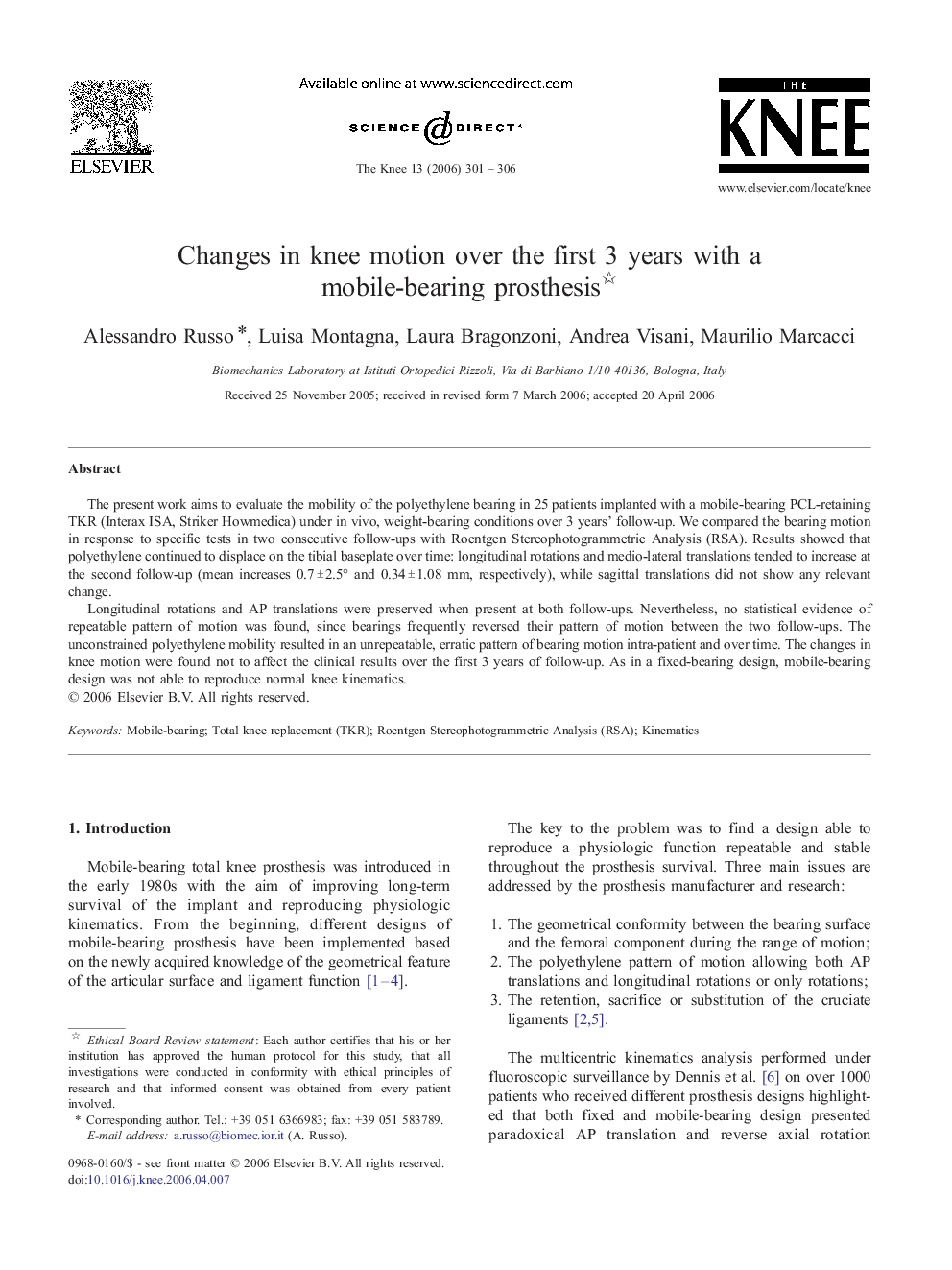| Article ID | Journal | Published Year | Pages | File Type |
|---|---|---|---|---|
| 4078206 | The Knee | 2006 | 6 Pages |
The present work aims to evaluate the mobility of the polyethylene bearing in 25 patients implanted with a mobile-bearing PCL-retaining TKR (Interax ISA, Striker Howmedica) under in vivo, weight-bearing conditions over 3 years' follow-up. We compared the bearing motion in response to specific tests in two consecutive follow-ups with Roentgen Stereophotogrammetric Analysis (RSA). Results showed that polyethylene continued to displace on the tibial baseplate over time: longitudinal rotations and medio-lateral translations tended to increase at the second follow-up (mean increases 0.7 ± 2.5° and 0.34 ± 1.08 mm, respectively), while sagittal translations did not show any relevant change.Longitudinal rotations and AP translations were preserved when present at both follow-ups. Nevertheless, no statistical evidence of repeatable pattern of motion was found, since bearings frequently reversed their pattern of motion between the two follow-ups. The unconstrained polyethylene mobility resulted in an unrepeatable, erratic pattern of bearing motion intra-patient and over time. The changes in knee motion were found not to affect the clinical results over the first 3 years of follow-up. As in a fixed-bearing design, mobile-bearing design was not able to reproduce normal knee kinematics.
